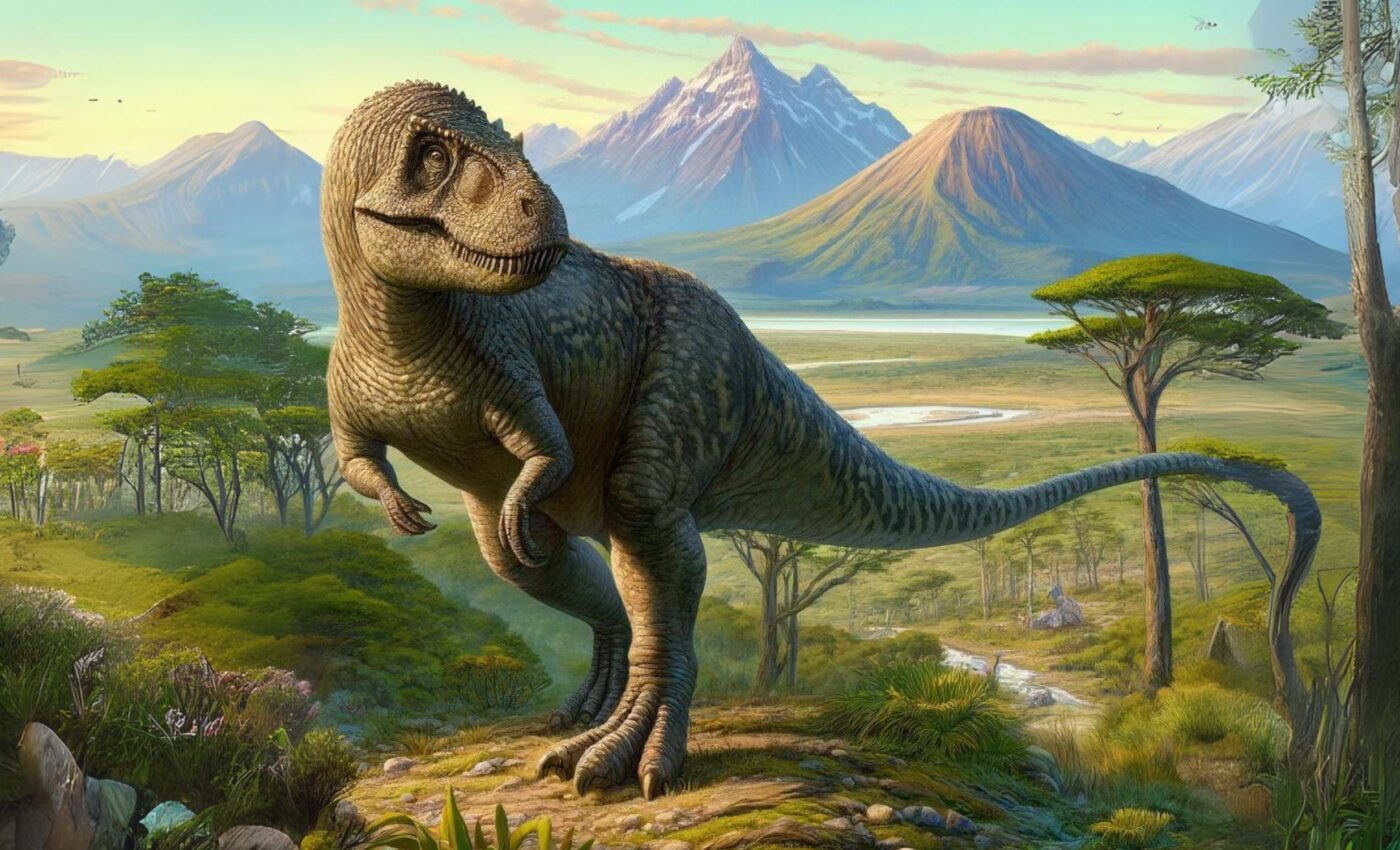
Newly-discovered dinosaur had arms even smaller than T. Rex's
A recent discovery in the heart of Patagonia is sending ripples through the paleontological community. The newly unearthed Koleken inakayali fossil, a carnivorous dinosaur species with astonishingly short arms, is challenging our understanding of prehistoric life in South America and raising questions about the evolution of abelisaurid theropods.
Dinosaur discovery and its short arms
Koleken inakayali‘s skeletal remains were discovered in the La Colonia Formation of central Patagonia. A team of paleontologists led by National Geographic Explorer Diego Pol meticulously studied these fossils.
This find marks only the second known abelisaurid from this formation. It sheds light on the diverse array of dinosaurs that roamed the region during the Late Cretaceous Epoch.
Koleken inakayali had notably shorter arms than T. Rex, offering new insights into abelisaurid anatomy and evolution. This discovery enriches our understanding of dinosaur diversity and adaptation before the mass extinction event.
“This finding significantly expands our knowledge of abelisaurid theropods in Patagonia just prior to the mass extinction event,” explains Pol, emphasizing the importance of Koleken inakayali in understanding the evolutionary trajectory of these unique dinosaurs.
Koleken inakayali: Dinosaur with short arms
While Koleken inakayali shares some similarities with its more famous relative, Carnotaurus sastrei, also from the La Colonia Formation, it boasts distinct characteristics that set it apart.
Notably smaller in size, Koleken inakayali exhibits unique skull features and anatomical variations, distinguishing it from other abelisaurids.
The research team meticulously analyzed the partial skeleton, which includes skull fragments, vertebrae, a complete hip, tail bones, and nearly complete legs.
This comprehensive examination allowed them to reconstruct Koleken inakayali‘s appearance and gain insights into its evolutionary relationships.
Overall, Koleken inakayali‘s discovery contributes significantly to our understanding of the diversity and adaptation of abelisaurids during the Late Cretaceous Epoch.
Enigmatic short arms of dinosaurs
One of the most intriguing aspects of Koleken inakayali, and abelisaurids in general, is their remarkably short arms. While the exact function of these diminutive limbs remains a subject of ongoing debate, various hypotheses have been proposed.
Some researchers suggest that they played a role in close-quarter combat with prey, while others believe they evolved to avoid interference with the dinosaurs’ powerful jaws during feeding.
Koleken inakayali’s short arms contribute valuable data to this ongoing discussion, providing paleontologists with crucial evidence to unravel the mystery behind this unique anatomical feature.
Koleken inakayali found at the La Colonia Formation
The La Colonia Formation, renowned for its rich fossil record, continues to yield valuable insights into the Late Cretaceous period.
The discovery of Koleken inakayali further solidifies the formation’s status as a treasure trove of paleontological information, offering a glimpse into the diverse ecosystem that thrived in Patagonia millions of years ago.
“The addition of Koleken inakayali to the La Colonia Formation fauna underscores its importance as one of the most significant end-Cretaceous dinosaur-bearing rock units globally,” explained Ian Miller, Chief Science and Innovation Officer at the National Geographic Society.
How did dinosaurs like Koleken inakayali use their arms?
Dinosaurs used their arms for a variety of functions. These functions varied widely among different species and were influenced by their diet, size, and ecological roles. The functions may have included the following:
Hunting and feeding
Carnivorous dinosaurs like Velociraptor and Allosaurus had strong, clawed arms used for grasping and holding onto prey.
These dinosaurs relied on their arms to subdue and manipulate their catches. Some theropods had large claws that they used to slash at prey, delivering fatal wounds.
Herbivorous dinosaurs used their arms to pull down branches and gather foliage. Their hands could help strip leaves from branches.
Moreover, long-necked sauropods might have used their arms to help steady themselves while reaching for high vegetation.
Defense
Some dinosaurs, such as the Therizinosaurs, had large claws that they could use to defend themselves against predators.
These claws could deliver powerful slashes. Certain dinosaurs had bony protrusions or spikes on their arms that added a layer of defense.
Locomotion
Large quadrupedal dinosaurs like Brachiosaurus and Stegosaurus used their front limbs to support their massive bodies and for walking.
Their arms were crucial for maintaining balance and stability. Some smaller dinosaurs used their arms to help balance while running, allowing for quick turns and agility.
Social and mating displays
Dinosaurs like Oviraptors had feathers on their arms, which they could display during mating rituals to attract mates or to communicate with others in their group.
Some species had brightly colored or uniquely shaped arms that they could use in visual displays to establish dominance or attract partners.
Climbing
Smaller dinosaurs, like Microraptor, had arms adapted for climbing trees. These arms might have had claws that helped them grip bark and branches.
Also, dinosaurs living in forested environments used their arms to navigate through trees, escaping predators and finding food.
Koleken inakayali: A testament to scientific exploration
The unveiling of Koleken inakayali not only expands our understanding of abelisaurid dinosaurs but also highlights the importance of continued scientific exploration and the preservation of our planet’s natural heritage.
By studying the fossilized remains of creatures like Koleken inakayali, we unlock the secrets of Earth’s distant past and inspire future generations to delve deeper into the wonders of the natural world.
As paleontologists continue to investigate the La Colonia Formation and other fossil-rich regions, we can anticipate further discoveries that will reshape our understanding of the dinosaurs that once ruled our planet.
The story of Koleken inakayali is a testament to the power of scientific inquiry and the enduring fascination with the mysteries of our planet’s prehistoric past.
The study is published in the journal Cladistics.
—–
Like what you read? Subscribe to our newsletter for engaging articles, exclusive content, and the latest updates.
Check us out on EarthSnap, a free app brought to you by Eric Ralls and Earth.com.
—–













